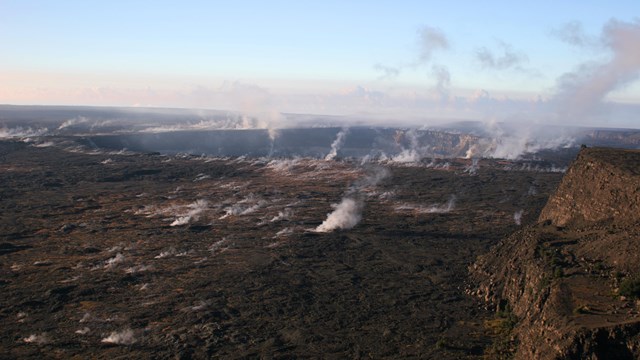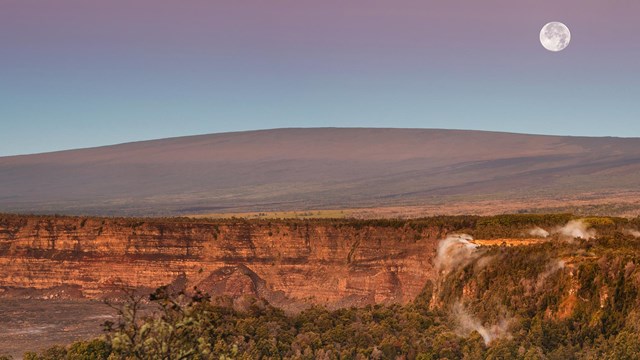|
Volcanoes are monuments to Earth's origins, evidence that its primordial forces are still at work. Over time, these prodigious land builders have created the Hawaiian island chain itself. Kīlauea and Mauna Loa are still adding to the island of Hawaiʻi and put this incredible phenomenon on full display.
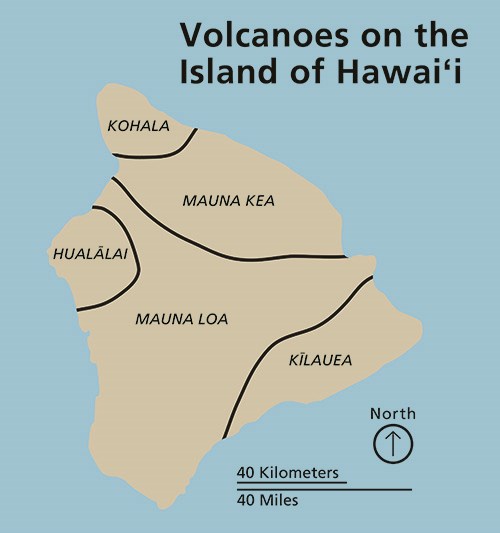
Island of GiantsLapakū i Hawaiʻi ka wahine, aʻo Pele 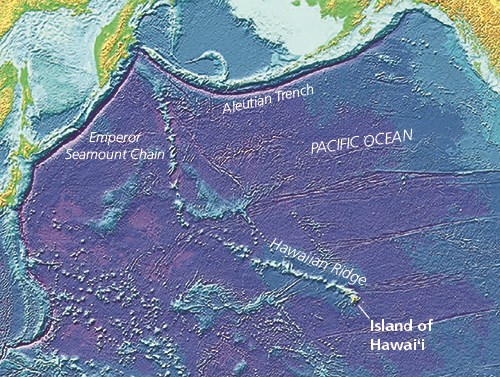
Why Are Volcanoes Here?The eight Hawaiian Islands we know today are only the most recent formations in a chain of over 80 volcanoes that stretch for thousands of miles to the northwest, both above and below sea-level. The further southeast in this chain, the younger the volcano, ending with the island of Hawai’i and Lō‘ihi, a growing volcano still beneath the ocean’s surface. 
Additional Resources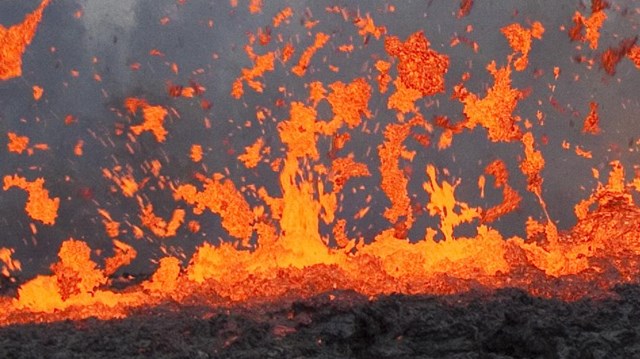
Eruptions
Kīlauea and Mauna Loa are two of the most active volcanoes on earth, erupting frequently throughout history 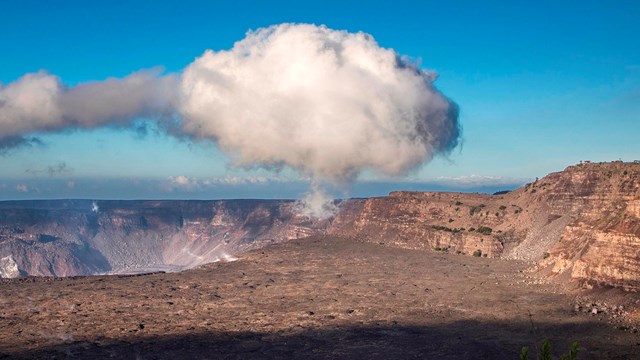
Webcams
Get a live look inside the park, courtesy of USGS Hawaiian Volcano Observatory 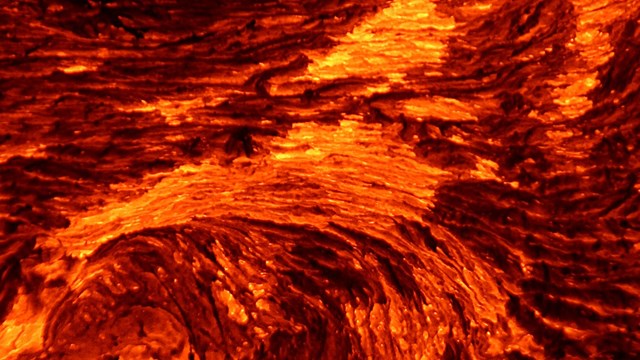
Lava
Molten lava is only visible during an eruption, but its solidified form makes up the island of Hawaiʻi |
Last updated: February 1, 2021

